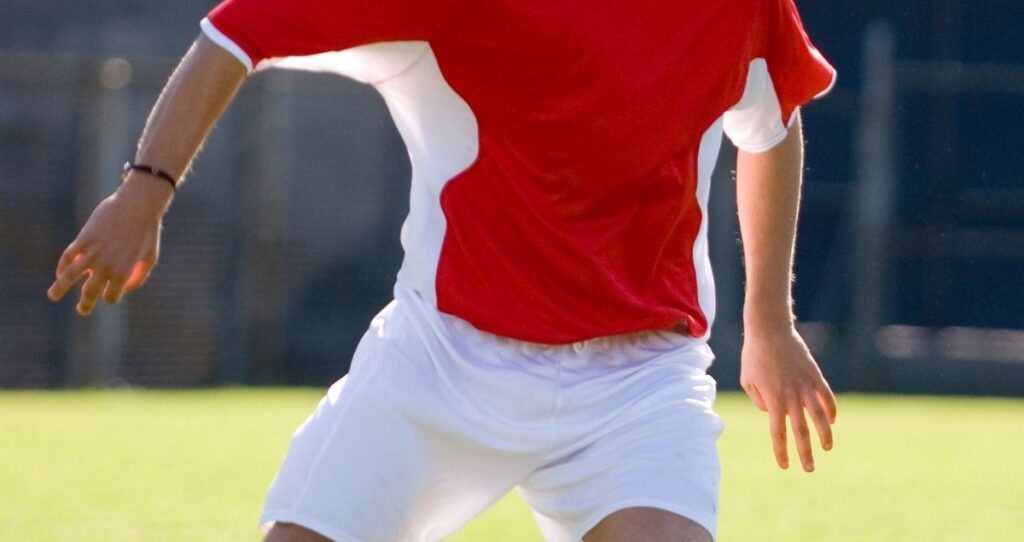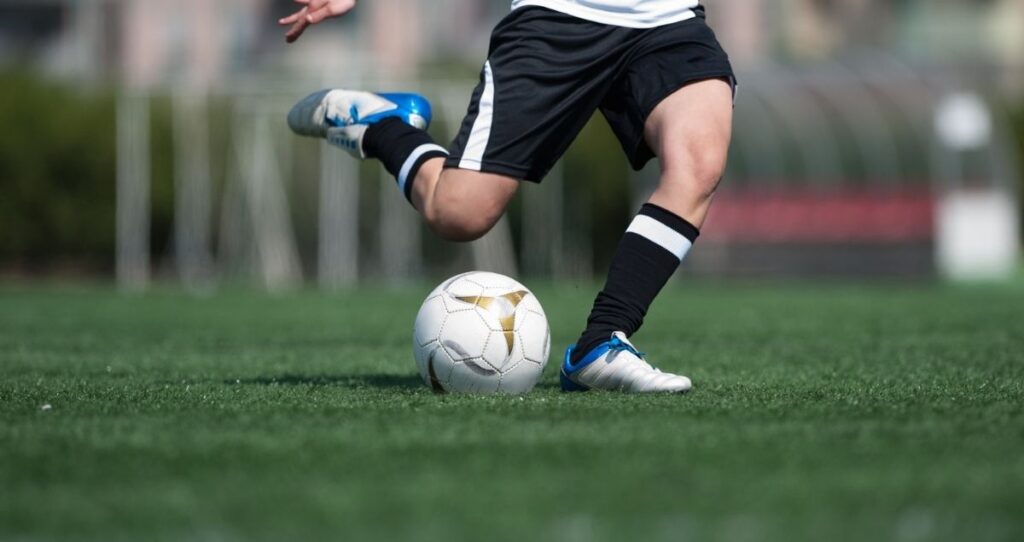Boost your betting experience and get up to $200 bonus right now!
Brazilian football has long been celebrated as a global phenomenon, famed for its dazzling flair, breathtaking skills, and a creativity on the pitch that borders on artistry. But what fuels this never-ending stream of talent, this “magic feet” signature of the nation? It’s no secret that Brazil’s youth systems hold the key. Even as the football world professionalizes and modernizes at breakneck speed, Brazilian academies keep conjuring prodigious players who mesmerize fans and dominate competitions worldwide. The answer isn’t just in raw talent or genetics — it’s in a deep-rooted, methodical approach that blends tactical ingenuity, cultural passion, and relentless scouting. These youth institutions have succeeded in preserving the essence of “jogo bonito,” nurturing not only technical skill but also game intelligence, creativity, and adaptability. The result? A pipeline of players who seem to perform football magic with their feet, regardless of changing global trends or tactical paradigms.
Behind the scenes, these systems rise on a robust confluence of factors: an emphasis on positional play that stretches beyond position labels, a commitment to versatile and creative thinking, and a lens that scrutinizes not only skill but mindset and decision-making from an early age. Add a widespread scouting network reaching the most remote corners of Brazil, and a comprehensive academy structure that molds talent into all-rounded footballers and human beings. Modern brands like Nike, Adidas, Puma, and Umbro are not only outfitting these young talents but influencing training philosophies with innovative gear and tech, intertwining global sports culture with local traditions.
From the dusty pitches of Rio’s favelas to the high-tech indoor training halls in São Paulo, Brazil’s youth systems reveal a compelling football story—one where magic is crafted with intelligence, instinct, and heart. This article peels back the layers to show why and how Brazilian youth systems continue to produce the kind of players that light up stadiums and etch their names in football folklore.

Deep Tactical Foundations: The Positional Play Revolution in Brazilian Youth Academies
Brazilian youth development is often shrouded in the myth of natural talent, but the reality is far more tactical and cerebral. The heart of this success lies in an enduring commitment to positional play.
Unlike many traditions that pigeonhole players into fixed positions, Brazilian coaches teach adaptability and spatial awareness. This is not just a style; it’s a philosophy rooted in understanding the entire pitch dynamically. Youth players are trained to comprehend the game’s flow, reading evolving situations and executing decisions that transform ordinary plays into moments of magic.
Fabio Mahseredjian, technical director at São Paulo FC’s academy, describes this approach:
“In Brazil, we don’t just train players to be good in a single role. Instead, we build footballers who think the game, see through the opposition’s tactics, and fluidly step into multiple roles as needed.”
This fluidity also helps tactical creativity, making Brazilian players unpredictable and hard to defend. The legendary tactical evolution worldwide acknowledges this Brazilian knack for synchronizing skill with cerebral gameplay.
Training regimens include multiple-position drills, small-sided games emphasizing quick transitions, and situational problem-solving exercises. These drills challenge young players to stretch their tactical minds while refining technical underpinnings like first touch and dribbling under pressure. Thanks to clubs like Santos and Flamengo investing deeply in these philosophies, Brazilian youth players emerge not just as entertainers but as intelligent playmakers.
- Focus on spatial awareness and reading of the game
- Multi-positional adaptability shaping tactical versatility
- Small-sided matches to promote quick decision-making
- Integration of tactical drills into daily training
- Holistic approach combining creativity with structure
| Aspect | Youth Training Implementation |
|---|---|
| Positional Play | Players trained in multiple positions with emphasis on role understanding |
| Tactical Awareness | Sessions focused on reading game patterns and anticipation |
| Creativity | Encouragement of spontaneous improvisation during drills |
| Decision Making | High-pressure small-sided games to test split-second choices |
| Technical Skills | Close ball control and passing accuracy as daily priorities |
Endless Scouting Networks and Early Talent Spotting: Brazil’s Football Treasure Hunt
Brazil’s success isn’t just forged inside academy walls. Its widespread scouting networks splay across every corner of the country, from urban favelas to Amazonian towns. These talent hunters, aided by data and modern tools, detect potential as early as six or seven years old, bridging the gap between passion and professional grooming.
What differentiates Brazilian scouting is its holistic evaluation. It goes deeper than flashy footwork or lightning pace. Scouts train their eyes to find tactical intelligence, decision-making flair, and even emotional maturity—traits that predict long-term success on and off the pitch.
Lucio Antunes, the head coach of Brazil’s U17s, emphasizes:
“We look for those who can understand the rhythm of the game, make intelligent decisions under pressure, and communicate effectively with teammates, not just for individual skill.”
To cover such an expansive area, Brazil organizes scouting hubs across regions, with experts familiar with local football culture. This ensures no diamond-in-the-rough goes unnoticed, whether in the bustling streets of São Paulo or secluded coastal villages.
- Early talent identification from age 6 or 7
- Detailed tactical and psychological assessments
- Regional scouting hubs to maximize coverage
- Focus on adaptability and leadership alongside skills
- Collaboration with local clubs and schools to support youth football
| Scouting Focus | Specific Indicators |
|---|---|
| Technical Ability | Ball control, dribbling, passing accuracy |
| Tactical Intelligence | Decision making, positioning, anticipating play |
| Mental Resilience | Handling pressure, leadership, teamwork |
| Physical Attributes | Speed, agility, stamina evaluated with sustainable growth in mind |
| Psychological Profile | Discipline, communication, coachability |
Coaching Beyond the Ball: Holistic Development of Brazil’s Next Generation
Brazilian youth coaches don’t just focus on technical and tactical prowess—they invest heavily in nurturing well-rounded characters. The system emphasizes values like discipline, respect, teamwork, and leadership, understanding their role in building resilient professionals who excel amid modern football’s pressures.
Mahseredjian explains, “Being a great footballer comes with responsibility—respect your teammates, your opponents, and your coaches. We foster leadership every step of the way, preparing players for challenges on and off the pitch.”
This holistic training environment blends classroom sessions, mentorship programs, and community interactions with rigorous physical and tactical drills. Players learn not just to dribble and shoot but to think critically, communicate effectively, and embrace their role in a team dynamic.
Tactical versatility continues to feature prominently. Coaches encourage experimentation across positions to create adaptable players comfortable with evolving game demands, a strategy that assimilates modern trends in formations and competition formats (source).
- Emphasis on leadership development and communication skills
- Promotion of team ethics and respect
- Exposure to varying roles to foster tactical flexibility
- Integration of psychological support and mentorship
- Community involvement to ground players culturally and socially
| Development Area | Implementation Techniques |
|---|---|
| Discipline & Respect | Regular workshops and role modeling by senior players |
| Leadership | Captains’ training and peer mentoring programs |
| Tactical Flexibility | Rotation through multiple positions during youth matches |
| Communication | Group exercises and psychological coaching |
| Social Awareness | Community engagement projects and cultural education |

Seamless Pathway to Professionalism: How Brazilian Academies Bridge Youth to Elite Football
The journey from a local kid kicking a ball in the streets to wearing the professional jersey is carefully mapped out in Brazil. This pathway is shaped by meticulously structured clubs’ youth academies and a strong alignment with first-team strategies that smooth transitions for young stars.
Notable clubs such as Flamengo and Palmeiras partner their youth setups with elite training facilities and comprehensive development models. This ensures players graduate ready for the tactical and physical demands of top-tier football.
One standout feature of these pathways is the integration of tactical philosophy from youth to senior squads. Training methods, game plans, and even player roles are synchronized, creating a progression pipeline that minimizes confusion and maximizes performance when youngsters step up.
Youth players also gain significant exposure through domestic leagues and international tournaments, sharpening their skills against diverse competition and spotlighting them for scouts worldwide.
- Academy environments providing top facilities and coaching
- Strategic alignment between youth and first teams
- Regular participation in domestic and international youth competitions
- Early professional contracts and structured mentoring systems
- Collaboration with top sportwear brands like New Balance, Asics, and Lotto to enhance player performance
| Academy Feature | Role in Player Development |
|---|---|
| Facility Quality | State-of-the-art grounds and equipment |
| Coaching Consistency | Aligned training philosophies through all age groups |
| Competitive Opportunities | Access to high-pressure league matches and international exposure |
| Mentorship | Guidance from senior pros and former stars |
| Brand Partnerships | Provision of innovative kits and performance gear |
Watching these breathtaking skills unfold in official youth competitions demonstrates how deeply embedded creative freedom and tactical intelligence have become within Brazil’s football fabric. Increasingly, emerging talents receive support from global brands including Puma, Umbro, and Kappa to further boost their development and global visibility.
Preserving Cultural Identity While Embracing Innovation: The Future of Brazilian Youth Football
While Brazilian football’s roots run deep in tradition and culture, its youth systems constantly evolve. Coaches and academies are marrying long-standing philosophies with cutting-edge technologies including video analysis, sports science, and data-driven tactics.
This approach keeps the game’s soul intact — the flair, the improvisation, the “jogo bonito” magic — while adapting to the demands of modern competitive ecosystems. The involvement of brands such as Reebok and Hummel in providing not just equipment but also innovative training tools highlights this blend of tradition and progress.
The engagement of youth players on social platforms like also spreads awareness and connects the next generation of stars with fans globally, creating a sense of community and joint passion that further fuels their journey.
Key future directions include strengthening youth mental health programs, expanding scouting through AI analytics, and facilitating multilingual tactical education to prepare players for diverse football cultures worldwide.
- Incorporation of sports science and data analytics into training
- Emphasis on mental health and psychological resilience
- Global fan engagement through social media and digital platforms
- Enhanced collaboration with international clubs and brands
- Respecting cultural traditions while pushing tactical innovation
| Innovation Area | Expected Impact |
|---|---|
| Sports Science Integration | Optimizing physical conditioning and injury prevention |
| Data Analytics | Refined talent identification and tactical planning |
| Mental Health Programs | Stronger psychological resilience |
| Social Media Engagement | Building global fan communities and player visibility |
| Brand Collaborations | Modern training gear supporting performance and comfort |
FAQ About Brazilian Youth Football Systems and Their Continued Excellence
- Why are Brazilian youth systems still producing such talented footballers?
This success is rooted in a holistic approach combining tactical intelligence, early talent identification, creativity-focused training, and supportive pathways to professionalism. - How important is positional play in Brazilian youth development?
Extremely important. Positional play teaches players to be adaptable and understand the game deeply rather than just fulfilling rigid roles. - What role do global brands like Nike and Adidas play in these youth systems?
They provide innovative sportswear and technology that support training and player performance, while also funding programs and campaigns that help nurture youth talent. - Do Brazilian academies emphasize mental health as part of player development?
Yes. Contemporary programs integrate psychological support to build mental resilience crucial for professional success. - How do Brazilian youth players get exposure to professional football?
Through structured academy systems linked to their first teams, exposure in domestic leagues, and international youth tournaments, players experience high-level competition early on.
Join today and grab up to $200 bonus for your next bets!
Content assisted by AI. This article was created in whole or in part with the help of artificial intelligence.